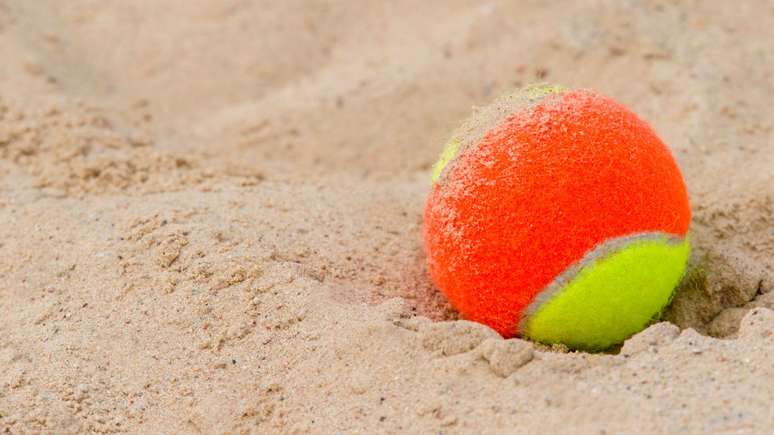A Brazilian study shows that lower limb injuries are the most common among fans of this sport, practiced by approximately 300,000 people in the country
Among many sports, the beach tennis he is one of those who have gained more and more followers thanks to Brazil. And you don’t even have to live on the beach to practice it, as several cities have increased the number of sand courts that offer this sport.
When you decide to do physical activity, however, you have to be careful: almost half (48.8%) of those who practice this sport have already suffered an orthopedic injury. The discovery comes from a study conducted in Faculty of Medical Sciences of the Holy House of São Paulo and published in July in Brazilian Journal of Orthopedics.
To obtain the results, the researchers applied a questionnaire to 160 regular beach tennis players, with an average age of 40 years, in two cities of São Paulo: St. Paul AND Saint Caetano do Sul. Initially, data such as age, gender, height, weight, Body mass index (BMI) and the athlete’s dominant side.
In the second phase, the researchers investigated practice time (in months, days, and hours per week), competition participation, category, experience with other sports, and the use of the backhand with both hands (in this movement, the person hits the ball holding the racket with the back of the dominant hand facing the net).
Finally, they collected information about the presence of injuries and in which segment they occurred: spine, upper limbs, or lower limbs. The results indicate that 30% of injuries occurred in the lower limbs (feet, knees, and legs), 11.3% in the spine, and 25% in the upper limbs. The incidence was higher among older people.
The study also found that most of the professionals (44.4%) were beginners and less than 10% were classified in the professional category. Additionally, 46.3% had been playing the sport for about a year and nearly a third trained two to four hours a week. Many (56.9%) had played racket sports before, and 52.5% had no other concomitant activities.
Beach tennis is a mix between traditional tennis, beach volleyball and badminton. Brazilian Beach Confederation Tennis It is estimated that there are around 300 thousand practitioners in the country, with strong growth after the pandemic COVID-19when the sport became popular, as it was recommended to do physical activity outdoors.
“Beach tennis is a sport that is growing a lot in the country and we are seeing an increasing number of patients in the office with pain related to the practice,” says surgeon Antônio Carlos da Costa, professor at Santa Casa de São Paulo and lead author of the study, as well as a beach tennis player.
According to him, there are still few studies on this modality in the scientific literature. “We use very well-studied concepts from tennis, squash and other racket sports, but we know that there is a big difference between them, especially because court and sand sports differ in surface. That’s why we decided to make this Brazilian sport. study”account.
Sand is a problem
The high number of injuries, especially those to the lower limbs (knees and ankles), is due to the fact that beach tennis is a dynamic sport. The athlete must move quickly on the soft sand, requiring a lot of effort.
“These injuries are more frequent in sand sports precisely because of the instability of the ground. The sand is very unstable, it sinks, and since the athlete plays barefoot, without protection on the feet, the lower limbs are more vulnerable to sprains and overloading of the hips”warn the orthopedist and the hand surgeon Henry Bufaiçalfrom Orthopedic Service at Albert Einstein Israeli Hospital From Goiania. In court tennis, however, the athlete wears appropriate footwear and plays on a smooth, flat surface, which allows for a different type of grip and performance.
According to Costa, injuries occur in all sports. “Physical activity is health, sport is injury”says the doctor.
In his opinion, even if beach tennis is not one of the most dangerous sports, it is increasingly common to see people who have never played racket sports playing for many hours a day, sometimes seven days a week, which increases the risk of injury and causes defects in execution that are difficult to correct.
“Every sport has an appropriate technique and by practicing according to the technique the athlete will certainly have fewer injuries. If the person plays alone or learns badly, especially after a certain age, it is much more difficult to correct acquired vices”evaluates the surgeon and professor of the University Holy House.
How many hours is it recommended to play?
There is no maximum recommended number of hours to practice beach tennis. According to Costa, the suggestion is not to exceed two hours a day and to rest at least two days a week. If there are no injuries, this time can be increased little by little; in the presence of an injury, the ideal is to reduce the hours of practice. “We also recommend alternating beach tennis with other activities, such as weight training, running, among others.”guide the researcher.
For those who are just starting out in the practice, the suggestion is to buy a good racket, suitable for the person’s physical structure, and look for a qualified teacher who teaches the technique without flaws. It is also important to respect the limits of your body. “At the first sign that something is wrong, consult a medical specialist”warns Costa.
For Bufáiçal, the results of this work show pioneering findings that could help guide treatment and perhaps even future training protocol design for athletes, so that they avoid this number of injuries. “Beach tennis is a sport that involves children and the elderly. We have a growing population of amateurs, which makes injuries more common. That’s why it’s so important to have national data”he says.
Source: Einstein Agency
Source: Terra
Ben Stock is a lifestyle journalist and author at Gossipify. He writes about topics such as health, wellness, travel, food and home decor. He provides practical advice and inspiration to improve well-being, keeps readers up to date with latest lifestyle news and trends, known for his engaging writing style, in-depth analysis and unique perspectives.








